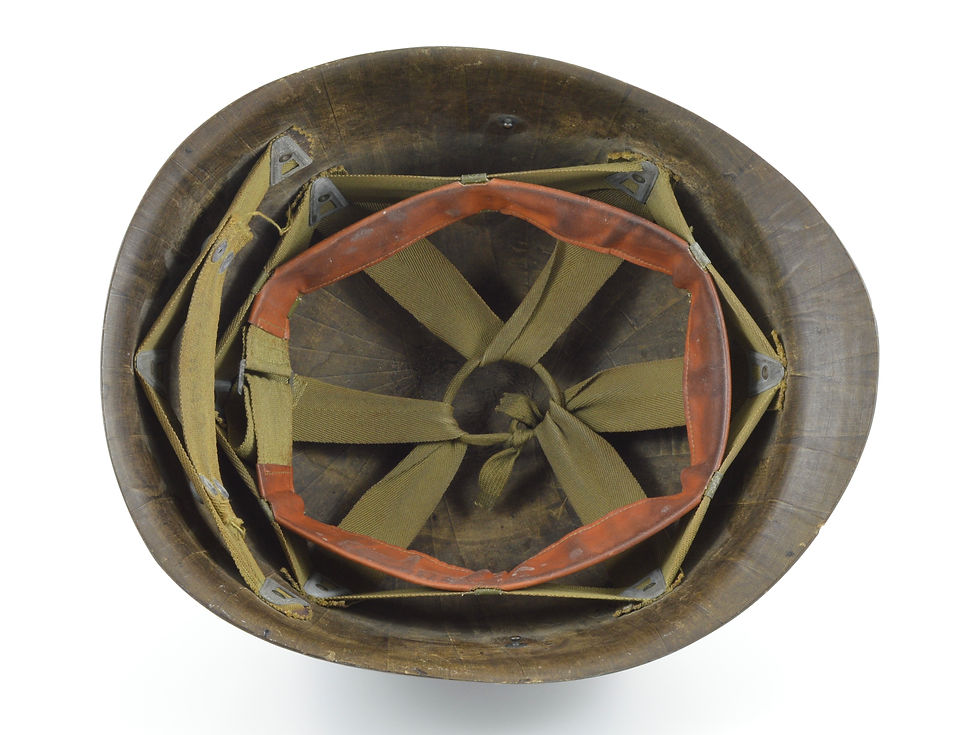WWII U.S. Lt. Col. Medic's Fixed Loop M1 Helmet & Matching St. Clair Liner Set
This is without exception a museum-worthy helmet and one of the finest examples we have ever encountered. This original early-WWII U.S. medic's helmet set is identified to Lieutenant Colonel George L. Johnson Jr., serial number O-495490. View the Veteran's Information section for more details regarding Lt. Col. Johnson's service in the European Theatre of Operations. In addition to the three original overpainted medic roundels, both the liner and steel shell feature Lt. Col. Johnson's original hand-painted oakleaves, "follow-me" bars, and serial number - showcasing their long history together as a set. The fixed loop helmet shell's heat stamp is concealed by the interior's paint, however judging by the early McCord fixed loops and "raised-bar" chinstrap hardware, it likely dates prior to June 1942. It retains its original factory paint, cork texture, and OD#3 (khaki) chinstraps. In addition to the matching St. Clair liner's original officer's insignia, the exterior exhibits light-green textured paint, with smooth dark olive drab rivet heads - a combination only seen on these low pressure liners produced during a very short period in late 1942. The liner's khaki suspension is intact, but weakened near the neck support's left A-washer. It comes complete with its original headband, neckband, and flat green-buckled leather liner strap - all of which show consistent wear.
Veteran's Information
Englewood, New Jersey resident, Lieutenant Colonel George Leonard Johnson Jr., serial number O-495490, served in the Third Army's 96th Evacuation Hospital. As a Columbia University Medical School graduate, Johnson received his officer's appointment of Major on September 11, 1942. He underwent stateside training in Mississippi, Pennsylvania, New York, and Nebraska, before being appointed to Lt. Col. on January 11, 1944. The 96th set sail for Port Gourock, Scotland, United Kingdom, arriving on February 28, 1944. From there, the unit moved to England via train. At 1500 hours on June 11, 1944 orders were received instructing all vehicles and personnel to relocate to the Port of Plymouth. On June 15, 1944, the 96th boarded the troop ship SS Empire Javelin. The following day, D-Day + 10, the unit's LCTs landed on Utah Beach in Normandy, France. From there, the 96th Evacuation Hospital set up field operations just west of Ste-Mère-Eglise. As the Allies moved eastward, so too did Lt. Col. Johnson and the 96th Evacuation Hospital, which by war's end handled 22% of all First United States Army casualties. Lt. Col. Johnson was honorably discharged on October 8, 1945. Made available to the new owner, below, are Lt. Col. Johnson's final pay stub, which describes his service in much greater detail, as well as a link to the 96th Evacuation Hospital's unit history.
































